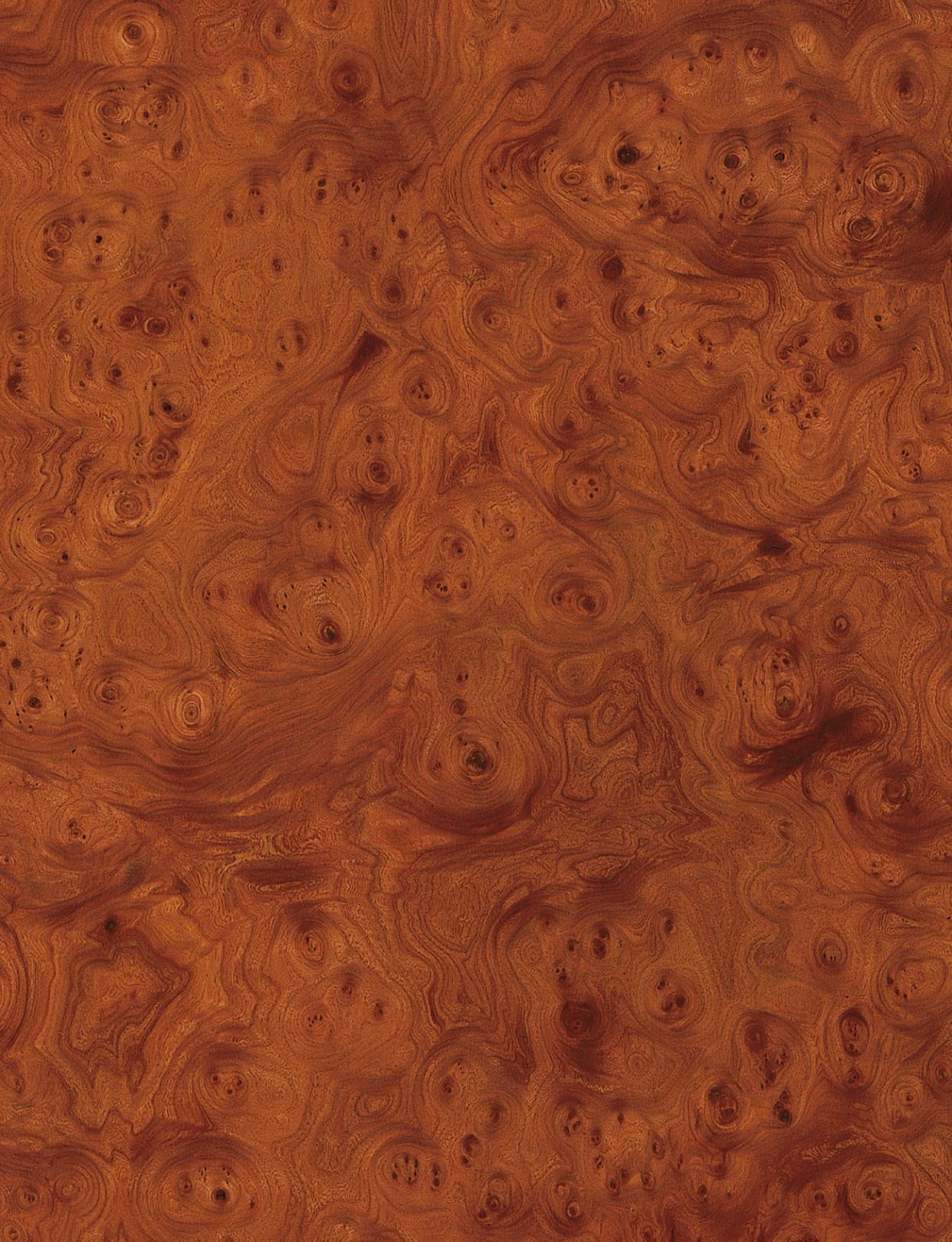
Elm Burl
Ulmus carpinifolia, Ulmus glabra

Trade Names
Elm Burl
Origin
Central Europe
Range
Mainly in France and England. Due to the Dutch Elm disease the occurrences are very rare. The majority of the felled burl trees are already dead, i.e. the heartwood is already stained dark brown. Sought are the still living trees, the heartwood of which is still showing the typical light brown, noble coloring. It can be assumed that in the near future it will no longer be possible to produce Elm Burl veneer.
Uses
Very decorative veneer wood, high quality architectural woodwork and high class furniture making. In Central Europe mainly used as accentuating wood for decorative purposes; in Southern Europe due to fashion trends often also used for complete range of furniture.
Properties
The color of the heartwood is light to dark brown. Fine-eyed burl veneer with large dimensions and few open defects or bark pockets are sold at very high prices.
Machining
There is no difficulty to machining the slow grown grades with hand and machine tools. Rough pieces are difficult to plane and shape.
Seasoning
The burly texture calls for high care in drying to avoid degrading through surface checking and warping. The wavy texture also increases the demands put on machining to obtain a smooth surface without pick-up.
Finishing
Die normalen Oberflächenbehandlungsmittel kann man problemlos einsetzen. Der groben Struktur wegen ist ein Porenfüller zu empfehlen. Hochglanzoberflächen wirken außerordentlich eindrucksvoll.
Jointing
All wood joints with nails, screws and glue hold well although pre-drilling is to be recommended due to the tendency to split.

